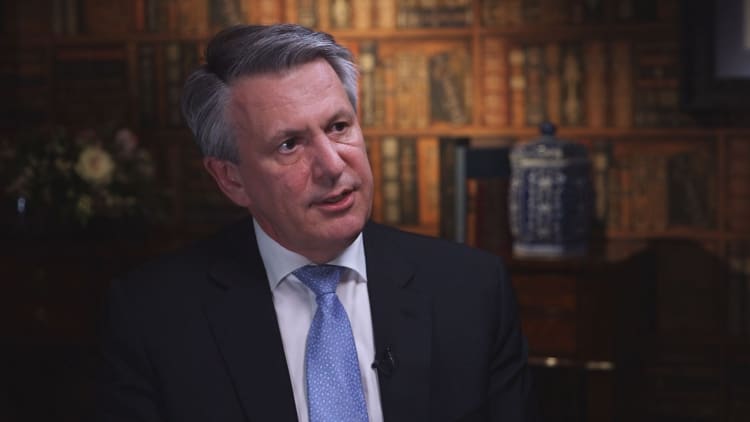Royal Dutch Shell is pushing forward a long-delayed liquefied natural gas export project in British Columbia, making it the first Canadian LNG terminal to get the financial green light.
Shell's decision on Tuesday to move forward the $14 billion LNG Canada project — the largest of its kind in years — signals confidence that global demand will rise quickly enough to sop up growing supplies of LNG. It also opens a new competitive front for the U.S. terminal developers lining up to take advantage of booming demand for natural gas super-chilled to liquid form, particularly in Asia.
The company deferred approving LNG Canada in 2016 during a period of weak LNG prices. Shell is now moving forward as prices strengthen and the Anglo-Dutch energy giant continues to stake its future on the growing role of natural gas in the world's energy mix.
"We believe LNG Canada is the right project, in the right place, at the right time," Shell CEO Ben van Beurden said in a statement.
"Global LNG demand is expected to double by 2035 compared with today, with much of this growth coming from Asia where gas displaces coal."

Construction on the LNG Canada facility will start immediately and is expected to be complete in the mid-2020s. The project aims to take advantage of cheap and abundant supplies of natural gas from British Columbia and high LNG prices in North Asia.
Shell believes the project has a cost advantage compared with U.S. terminals under development, which are also targeting the Asia market. The trip from the shores of British Columbia to North Asia is half the distance from the Gulf of Mexico, where many of the U.S. terminals would be located, Shell said.
The company estimates LNG Canada has a $1.50 per million British thermal unit advantage over U.S. shipments, Shell Chief Financial Officer Jessica Uhl told analysts on Tuesday. Shell estimates it can pocket about half of that advantage after costs.
The decision comes just weeks after China, the world's demand engine for LNG, slapped a 10 percent tariff on U.S. LNG shipments in retaliation for President Donald Trump's latest round of trade barriers on Chinese goods. The tariffs have raised concerns that developers could delay a final investment decision on some U.S. LNG terminals.
Last week, van Beurden told CNBC that Trump's tariffs and quotas on foreign steel are beginning to impede Shell's U.S. construction projects.

Shell has yet to make a final decision on an LNG terminal that it's developing with Energy Transfer on the Gulf Coast near Lake Charles, Louisiana. On Tuesday, Shell's director for integrated gas and new energies, Maarten Wetselaar, told analysts the company continues to work with partners to optimize the project and further reduce anticipated costs.
The LNG Canada project is not just a milestone for Shell and British Columbia, but for the industry. It is the first greenfield LNG export terminal approved in five years and the largest since Russia's Yamal LNG terminal in 2013, according to energy research firm Wood Mackenzie. The firm said it could spark the return of megaprojects.
"The momentum behind LNG Canada reflects the drastic improvement in the LNG market over the past 12 months, driven by buoyant demand in China," Dulles Wang, director of Wood Mackenzie's North America gas practice, said. "A clutch of projects are vying for [final investment decision], including four mega trains in Qatar, Arctic LNG-2 in Russia, at least one development in Mozambique and several U.S. projects."
"We believe 2019 could be the busiest year of LNG [final investment decisions] ever," Wang said.
About a dozen LNG terminals have been proposed in British Columbia and several more in Quebec and Nova Scotia.

The LNG Canada project is unique because construction is being financed by a group of equity holders, rather than the traditional model of lining up long-term contracts with buyers. Each of the project's five joint venture partners will be responsible for recouping their investment by feeding natural gas supplies into the terminal and either using or selling the LNG themselves.
The structure gives the partners the option to sell LNG for delivery in the near future on the so-called spot market, though Wetselaar told analysts that Shell has held serious conversations about signing long-term contracts with potential buyers.
Shell Canada Energy is the majority stakeholder in the joint venture, which also includes subsidiaries of Malaysia's Petronas, PetroChina, Mitsubishi and Korea Gas Corp.
LNG Canada will launch with two trains, or liquefaction facilities, capable of processing 14 million tons a year. The partners have the option of building two more trains in the future.
TransCanada will build a pipeline called Coastal GasLink that will be dedicated to piping Canadian gas to the terminal.


